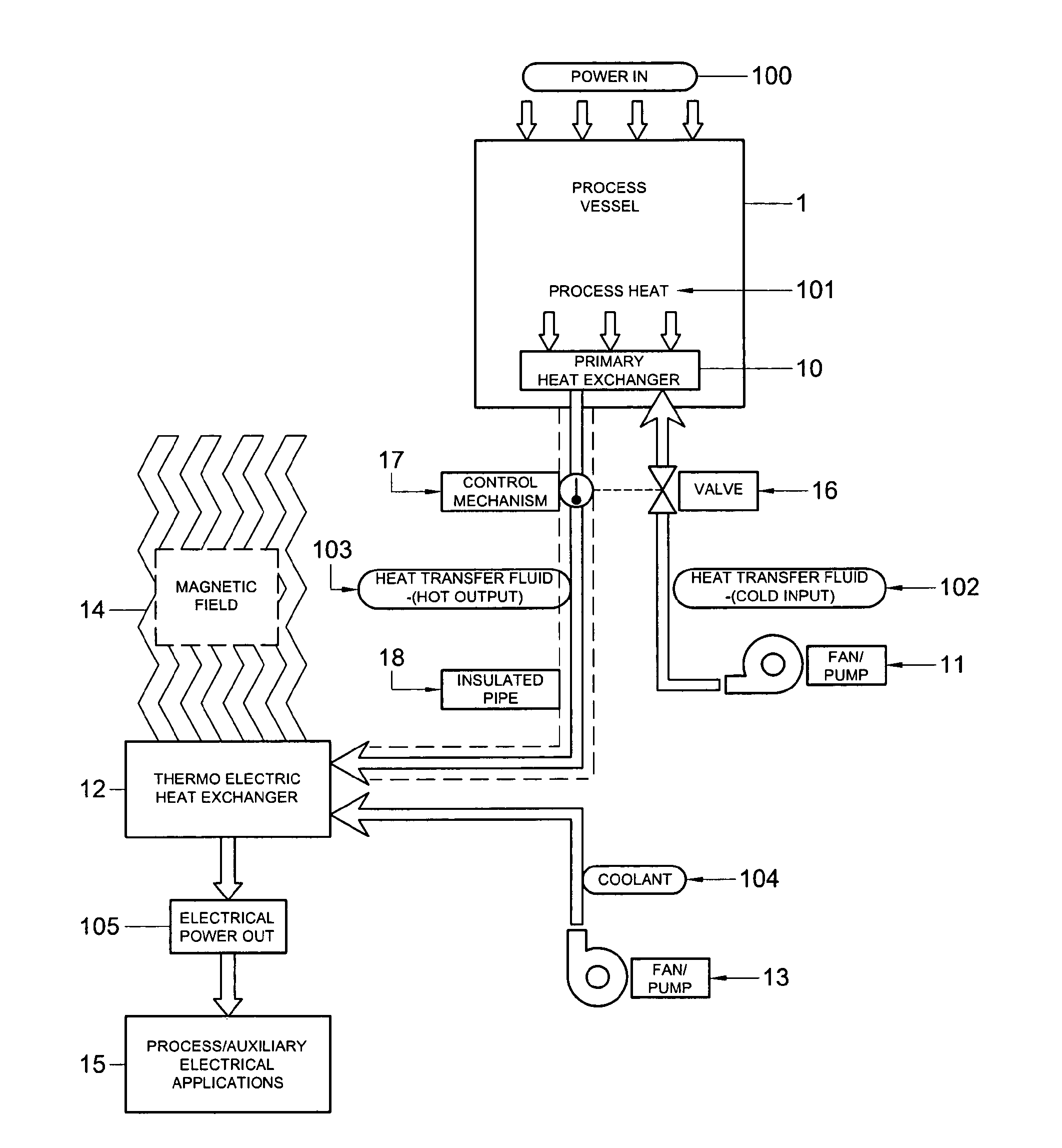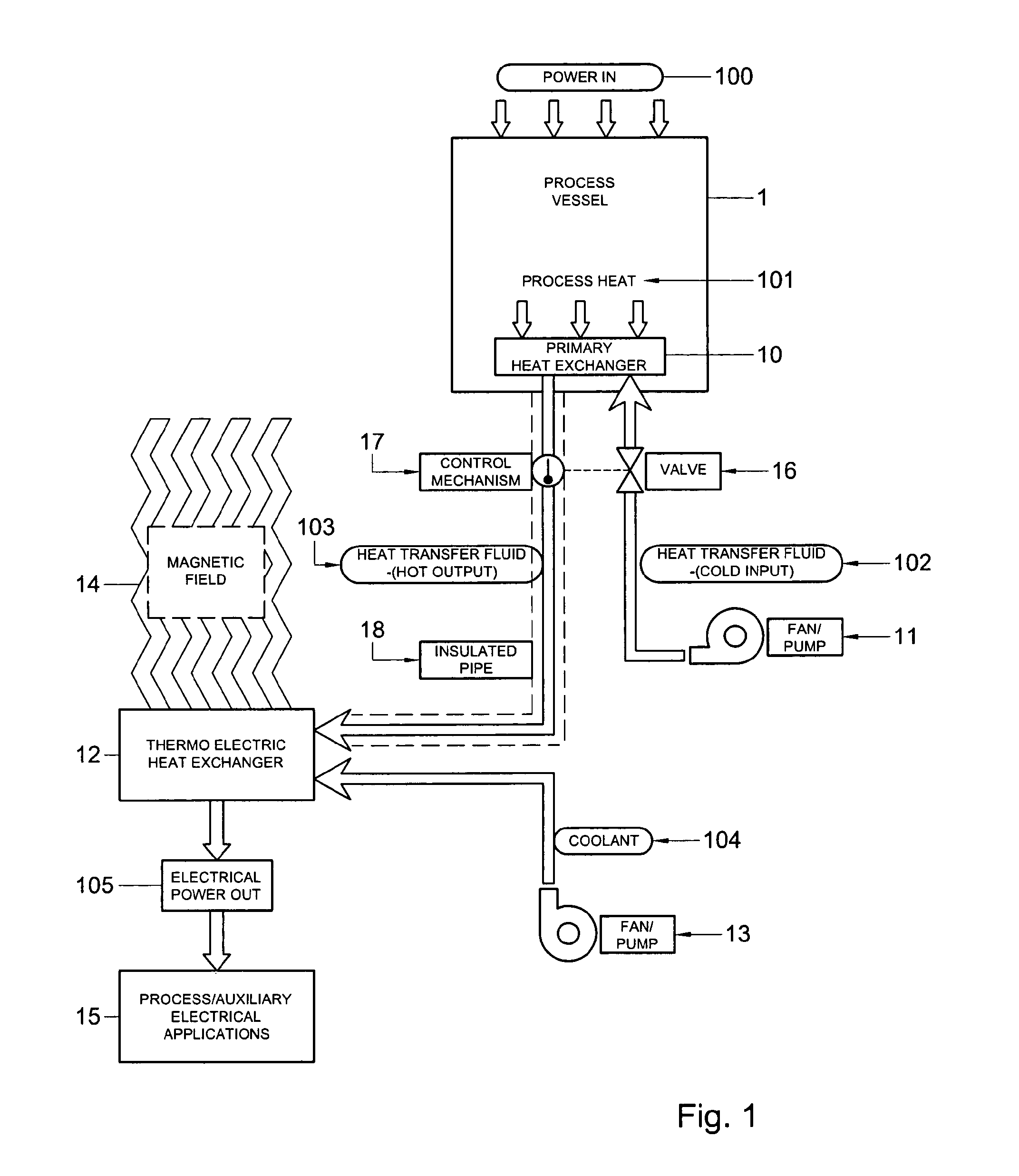Heat recovery system for pyrometallurgical vessel using thermoelectric/thermomagnetic devices
a pyrometallurgical vessel and heat recovery technology, applied in the manufacture/treatment of thermoelectric devices, lighting and heating apparatus, furnaces, etc., can solve the problems of inability to use coolants in close proximity to the pyrometallurgical vessel, inefficiencies in the conversion process, etc., to enhance the device performance, and improve the effect of efficiency
- Summary
- Abstract
- Description
- Claims
- Application Information
AI Technical Summary
Benefits of technology
Problems solved by technology
Method used
Image
Examples
Embodiment Construction
[0050]The invention will now be described with reference to its general use as a means of enhancing the efficiency of harvesting waste energy generated by pyrometallurgical process vessels. These efficiency improvements may relate to facilitating the safe use of heat transfer fluids having a higher heat capacity than the commonly-used gaseous fluids as a means of cooling the cold side of a thermoelectric array. These improvements may, where applicable (as for instance in equipment used for the electrolytic reduction of aluminium), relate to facilitating access to magnetic fields which would improve the recovery efficiency of thermoelectric devices by means of the Nernst effect or by material property improvements within the thermoelectric materials which may also be induced by the presence of a suitably-oriented magnetic field.
[0051]As shown in FIG. 1, pyrometallurgical process vessels (1) require a thermal energy input, designated as “Power In” (100) to develop the thermal and / or e...
PUM
| Property | Measurement | Unit |
|---|---|---|
| temperatures | aaaaa | aaaaa |
| thermal energy | aaaaa | aaaaa |
| temperature | aaaaa | aaaaa |
Abstract
Description
Claims
Application Information
 Login to View More
Login to View More - R&D
- Intellectual Property
- Life Sciences
- Materials
- Tech Scout
- Unparalleled Data Quality
- Higher Quality Content
- 60% Fewer Hallucinations
Browse by: Latest US Patents, China's latest patents, Technical Efficacy Thesaurus, Application Domain, Technology Topic, Popular Technical Reports.
© 2025 PatSnap. All rights reserved.Legal|Privacy policy|Modern Slavery Act Transparency Statement|Sitemap|About US| Contact US: help@patsnap.com


